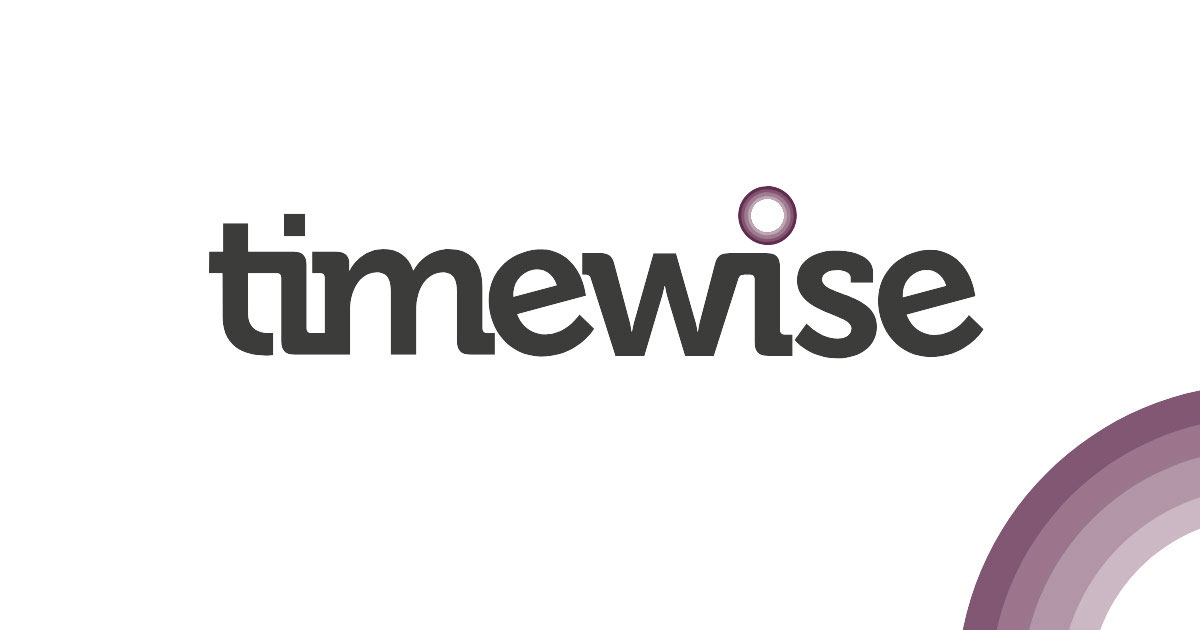

Our 16-month Teaching Pioneers Programme saw us partner with eight secondary schools, within three multi-academy trusts, to explore how best to champion and deliver flexible working within the profession.

It’s no exaggeration to say that the teaching profession is in the middle of a staffing crisis. Research from the National Education Union suggests the 44% of teachers are planning to leave within five years, and that it’s getting harder to fill vacancies, with a knock-on effect on workloads and wellbeing for remaining staff.
Introducing flexible working in teaching is less straightforward than in office-based roles, for a range of reasons. Complications around timetabling and culture, the frontline nature of the role and the intensity of the school day all play their part.
But all the evidence suggests that the positive impact it has on staff retention and recruitment makes it well worth the investment. The reasons why schools should implement flexible working are clear; what’s been less certain, until now, is how do it well.
Our Teaching Pioneers Programme sought to close this knowledge gap. Working with eight secondary schools, within three MATs, we spent 16 months exploring how best to champion and deliver flexible working within the profession.
Our learnings from the programme, and the implications for schools, academy trusts and policymakers, are set out in a full report, which you can download below. You can also download a guide, based on what we learned, which provides practical support for headteachers.
Published June 2022
By Rachel Parmley, Principal Consultant, Timewise

The deadline for the 2021-22 gender pay gap reporting has now passed, with initial data suggesting that the gap has barely narrowed, going from 10.2% in 2020 to 9.8% in 2021.
Now, perhaps this isn’t surprising, given that we are coming out of a pandemic in which women have been disproportionately affected. A report from the IFS on the first lockdown found that mothers were 47% more likely than fathers to have lost their job or quit, and were far more likely to be interrupted during working hours. More recently, our own research demonstrated that the pandemic has had a particularly fierce impact on part-time employees, the vast proportion of whom are women.
But even within this context, it is hugely disappointing that the gender pay gap remains so persistently wide. And it underlines the fact that, if businesses are genuinely keen to learn from the Covid-19 pandemic, they need to do so in an inclusive way that supports female career progression.
As we have previously explained, a workplace culture that embraces flexible working is a sure-fire way to approach this issue. Of the four reasons behind the gender pay gap, three can be tackled by creating quality part-time and flexible jobs at all levels, across all sectors, that are attractive to ambitious men and women alike.
And given that 9 in 10 workers say they want to work flexibly, doing so will help businesses attract and retain talented people, as well as narrowing their gender pay gap.
So with under a year to go until the next reporting deadline, the clock is ticking, and organisations who are serious about reducing their gender pay gap need to start now. Here are eight actions that leaders can take to get started.
Instead of just handing out laptops or trying to squeeze a full-time role into fewer days, redesign jobs by looking at when, where and in how much time a role is done, preferably taking a team-based approach. Specifically, consider offering part-time and job shares, rather than just homeworking.
It’s true that this is more complex in some sectors than others, but it can be done; we are showing what is possible through action research projects in hard-to-flex areas such as construction, banking, teaching and retail.
Advertise jobs as being open to flexibility at the point of hire. Make sure you are clear about what this flexibility means, and if you are open to job-sharing applicants, say so.
Our latest Flexible Jobs Index shows that only one in four jobs openly offer flexible working arrangements, which is far below candidate demand. In this era of candidate shortages and the ‘great resignation’, being upfront about offering flex will help you gain an edge in the battle for talent.
Ensure there are routes for flexible progression, to help overcome cultural bias. And make part-time roles more attractive to career-driven people, to ensure that career progression on a part-time basis is not only acceptable, but aspirational.
It’s worth getting feedback from any existing part-time workers to inform this process. Ask what they like about their working pattern, and explore whether there is anything that can be done to improve their arrangement and encourage others to consider flexible working.
For most organisations, flexible working strategy still relies on a request-response model which requires an employee to make a request. This feeds into much of the stigma around part-time arrangements, because it pigeon-holes flexibility as something that’s only considered in special circumstances (usually involving women and childcare).
The more flexibility is normalised, the more inclusive it becomes. So talk proactively to your teams about how they would like to work, making it clear that flexibility is something that can be explored, and don’t make assumptions about what they need. You could set up a survey, where employees can give anonymous feedback on their work practices.
A couple of watchouts. Avoid creating a two-tier workforce in which only some employees can access flexible working; whilst not everyone can work from home, you could explore other kinds of flex such as reduced hours, compressed hours, annualised contracts or staggered start and finish times. And for those that can work from home, remember to mitigate against proximity bias, to avoid the impact on their progression.
Gather as much data as you can around flexible working arrangements and requests in your business. This should include:
Given that the link between flexible working and the gender pay gap is clear, understanding your own data will help you make informed decisions about how best to close it.
Having flex role models – people who are effectively working in a flexible way – is critical to helping make the exception become the norm.
If people can’t see anyone working flexibly in a senior role, it’s hard for them to feel they might have flexible opportunities to progress. So champion those who are working in this way, and think about how others can follow in their footsteps.
Our annual Power List does this on a national scale, telling the stories of exceptional people working part-time, to show what is possible. But companies should do this too. By celebrating your staff who are blazing the trail for flexibly, both internally and through case studies on your jobs websites, you’ll open up a talent pipeline for those looking for flex.
Managing a team of people who aren’t all working full-time, or always physically present, isn’t instinctive; it needs to be learned. So teaching your managers the skills they need to lead and support a flexible team is vital, as is making sure they are supported to work flexibly, too.
At Timewise, we’ve developed a tried-and-tested training model that we use with our clients. Find out more through our Timewise consultancy service.
In order to have a tangible impact on their gender pay gap, leaders should not just commit to changing their approach – but also be willing to be held accountable.
So we believe all employers should be required to publish an action plan, as part of the reporting process, which explains how they are planning to address their gap, with a section dedicated to flexible working.
The evidence is clear: flexible working is key to women’s career progression. Done well, it should allow women to access and succeed in aspirational and well-paid jobs that do not require them to be in the office from 9-5, five days a week.
By offering flexible roles, you will not only narrow your gender pay gap, but also attract and retain the best talent, helping your business grow by remaining ahead of competitors. And at a societal level, you will support the creation of a healthier, more equitable society.
Of course, leadership is critical to sustainable change; so it’s important to get your organisation’s senior team on board with your plans, and vocally supportive. Make sure you’ve got that in place, then start working on the eight actions suggested above, so you’re ready for the next set of reporting in April 2023.
Published June 2022
The government’s Flexible Working Taskforce, of which our Co-Founder Emma Stewart is a member, has published a guide to support companies with designing and implementing hybrid working practices.
As well as explaining the business case for hybrid working, the guide offers practical advice and tips on a range of relevant workplace issues, including:
We shared our insights to support the development of the guide, as well as providing case studies and resources for further reading.
You can download it using the link below. And if you need any support with implementing the recommendations, we can help; feel free to drop us an email to start a conversation.

It’s fair to say that introducing flexible working in schools is more challenging than in many other sectors. As we previously explained in our report, Building flexibility into secondary schools, there are a number of barriers that have slowed progress in this area, including the logistics of timetabling, the need for teachers to be student-facing, and other cultural and attitudinal factors.
But the case for change is clear: the lack of part-time and flexible roles has been identified as a key reason behind the teaching brain drain. It also makes it harder to attract talented people to the profession, and to encourage them to return after a career break.
And whilst the pandemic has created huge pressures for school leaders and staff, from the cancellation of external exams to the need to create a safe environment for staff and students to return to, it’s undeniable that it has also opened up opportunities to rethink how things are done. Furthermore, as in most sectors, it has encouraged employers to increase their focus on staff wellbeing, and employees to evaluate their work life balance, and seek out ways to make it better.
We have long been interested in encouraging flexible working in schools, and are part-way through an action research project with three MATS. This will see us exploring the barriers to flexibility in more depth, and looking at how the positive experiences schools have gained during the pandemic can be taken forward. We’ll follow this up by designing flexible roles that can work around or overcome these barriers, and pilot them within schools.
As always, we will share our learnings during and at the end of this project, so all schools can benefit. But we are also really keen to give school leaders and HR teams the support they need to get started right now. So we have created a bank of resources to do just that, by:
We have also pulled out some of the key questions schools have asked us about implementing flexible working, and answered them in more detail.
We do hope you find these resources useful, and are able to build on them to create new, better opportunities for flexible working within your school. If you would like to explore the possibility of working with us to progress your plans, do please get in touch.
By Kevin Green, Interim Chair, Timewise Executive Board

It’s becoming increasingly clear that many of us will be working from home for a significant period of time. It’s also likely that many managers will be leading a completely remote team for the first time.
This situation was no doubt thrust on both parties with little time to think, talk or prepare for this new way of working. And it will call for managers to operate very differently.
We know that the way we engage and communicate with each other when people physically work together is often informal. Great managers understand their people, and can pick up on changes by observing both individual and team behaviour. However, both of these become much more challenging as people work from home or remotely.
But there is a massive, positive opportunity here. 80% of people who work remotely say that if it’s done well, their engagement and morale improves; and 62% say they feel more trusted. This is therefore an opportunity to be grasped.
Here are my six top tips to help you support and inspire your remote team.
In times of crisis and change, people look to their managers and leaders to provide clarity, support, guidance and direction. True leaders will step forward, recognising the importance of their role. And they will start by reinforcing why the work the team does is important.
The more this work is aligned to a compelling purpose, the better, as this creates meaning. Leaders who are good at this get their people excited about what they are doing and why it’s important. They need to walk the talk and be visible and available to their teams, but they also need to demonstrate energy and the ability to make tough or difficult calls.
A leader’s true values will be thoroughly tested under pressure. After all, it’s relatively easy to live your values when times are good. But when success and results hang in the balance, an authentic leader will demonstrate what they are prepared to sacrifice and the trade-offs they are willing to make. Leadership is about putting your team first and yourself second.
It’s important to set clear expectations about this new way of working. This includes your expectations of people’s availability and accountability as well as how often team and one-to-one conversations will take place.
My advice is to do generic scene-setting with the whole team so they all hear it together at the same time. Make sure there is plenty of time for questions, and remember to ask for ideas. How can we make this work together?
Then, have a one-to-one conversation with each member of the team about their specific deliverables, what you expect of them and by when. Clarity is important, but so is giving people the space and opportunity to share ideas, ask questions and explore the issues; it avoids misunderstanding and difficulty later. So don’t rush the process.
Team communication is an important part of a leader’s role in any circumstances; but when everyone is working remotely, it becomes critical. So you need to recognise that you should spend more time talking, listening and engaging with your people –it’s important people feel connected.
First, if at all possible, use video rather than conference calls. If you can’t, use conference calls rather than the dreaded email, which has so much potential there is for misunderstanding. The opportunity to use video is a godsend in the current situation, and is so much easier today thanks to tools such as Zoom, Skype and Google Hangouts.
Over 60% of communication is non-verbal, so seeing people as they talk enables you to pick up on these signs. Keep the team communicating as a whole. Continue with regular team meetings; indeed, to support this new way of working, you may want to increase their frequency –perhaps starting with twice or three times per week. This will help people get comfortable and allow them to test how it works for them.
Make sure you allow time for small talk, too; people may be feeling isolated or even lonely after several days with little social contact. A good way of doing this is to get everyone to check in (say how they feel at the moment) at the start of the meeting.
It’s also a good idea to carry on doing creative and brainstorming sessions with the team, asking for ideas or solving problems together, This will enable your team to feel connected and that they are making a collective contribution.
One-to-ones must continue and, as with general team meetings, you may want to do them a little more regularly to start with. Ask lots of questions to find out what’s going on for each individual. Share agendas in advance, and make sure you know what you’re going to be covering.
Preparation is even more important for conversations over the phone or video, as they tend to be shorter and more business-focused. Listen actively to what’s being said and try to avoid assumptions and talking over other people. Ask questions to clarify what’s meant, so you’re not talking at crossed purposes.
It’s important to foster friendships among the people that work for you. Apart from formal calls and meetings, encourage your people to have informal calls with each other to help them stay connected. We know that people feel more engaged and passionate about their work if they have workplace confidants and supporters. This may disappear during remote working if it’s not encouraged.
People go to their work friends when they need help or want to celebrate or commiserate about workplace things. In the absence of that support, work can feel lonely and isolating, and lacking attachment. However much we like what we do, we won’t be fully energised or motivated if we don’t have close and supportive relationships at work.
A study by Harvard Business Review showed that remote workers are far more likely than on-site employees to worry that co-workers say bad things behind their backs, make changes to projects without telling them in advance, lobby against them and don’t fight for their priorities. Be a leader who encourages a culture of open positive friendships among co-workers — this will avoid these concerns becoming a reality.
Be responsive and available to your team. Set aside time in your calendar when you’re happy to be contacted, so your team know they can catch up with you on anything.
One thing that really makes people feel distant is the communication time-lag. If they have to wait hours for a response to something they are working on, or an idea they have, whether it’s right or wrong, people feel it’s not important to their manager.
By setting time aside where you’re available online or over the phone to provide feedback or insight instantly helps people feel recognised and listened to.
Many of the things I’ve proposed here will feel unnatural to start with. But if you persist, then there is no reason why your team shouldn’t be as productive, creative and energised as if they were on-site together. In fact, you may even find that they perform better and deliver better results working this way. From adversity comes opportunities; let’s grasp them.
Published April 2020